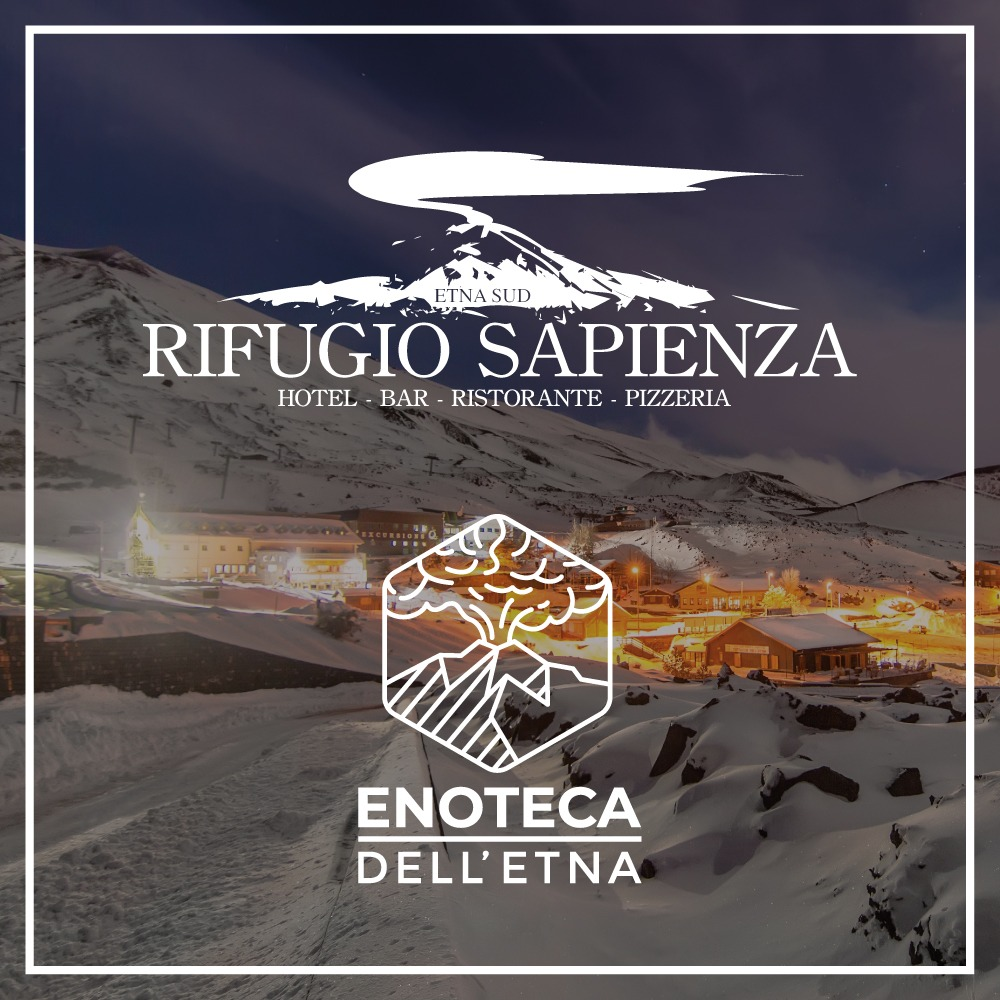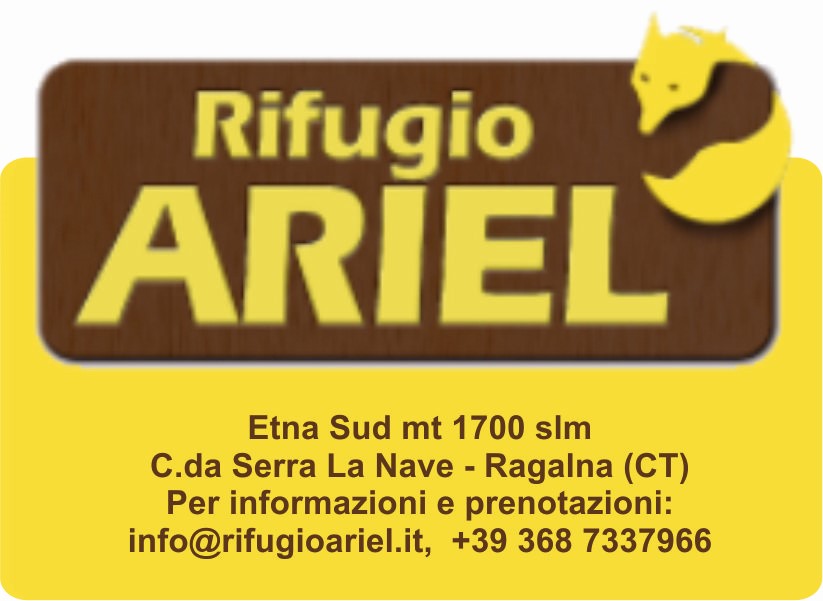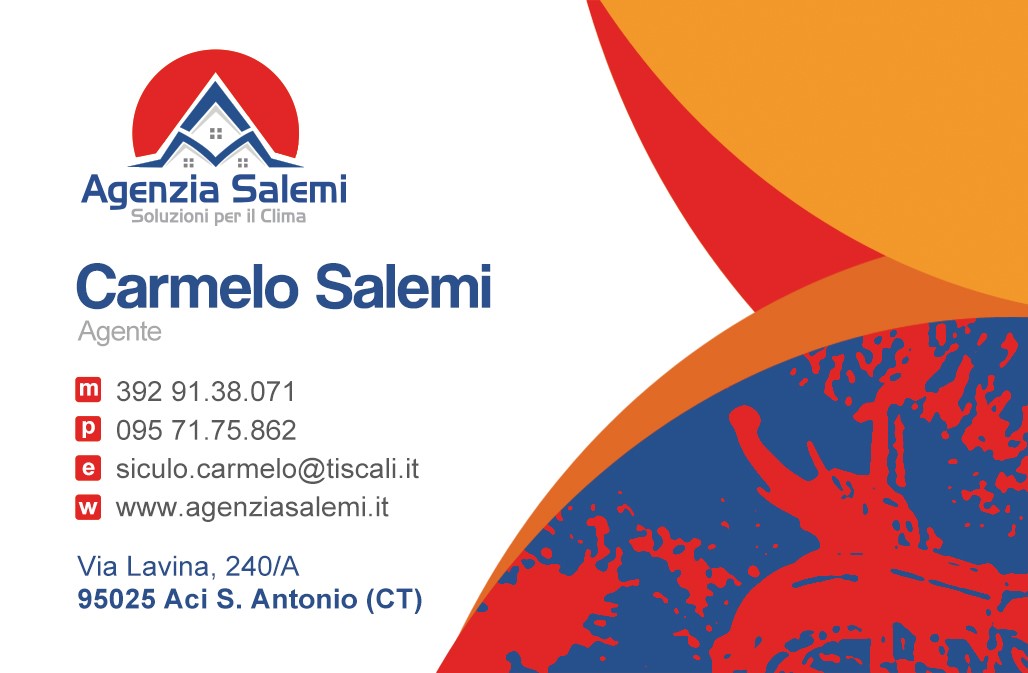Percorso
SentieroInglese
Route ![]()
Belpasso – Monte Manfrè Refuge
Anthropological and Natural Itinerary from Belpasso to the mountain
INTRODUCTION
The path No. 786 has been designed and implemented by the local section of Italian Alpine Club (C.A.I) in Belpasso with the contribution of the Municipality. It creates a connection between the town of Belpasso and "a Muntagna", as Etna volcano is called by its inhabitants. The trail ends at Monte Manfrè, where is a refuge of the same name renovated in 2015. This path leads to the northern territory of Belpasso, passing through some sites of interest worth visiting described by information boards along the way. The path is 15 km long, the height difference from the starting point to the arrival is 800 m and there are ten staging points along the track.
ITINERARY
It starts from Contrada Gattaino (Point 1, 522 meters above sea level) where you can observe ancient "towers", artifacts of rural civilization used in the past to place stones that farmers found during the tillage of the soil. In that time the terraces were cultivated with vine, very common in this area.
From point 1 to point 2, the path goes up slightly towards the northeast. For a short way it is flanked by the rocks shaped during the lava flow in 1669, famous for its destructiveness. At the time even Malpasso (the old Belpasso) was buried along with many neighboring villages. On the way you can look at other stone artifacts such as dry stonewalls and terraces.
At step 2 you are close to the shrine of La Madonna della Roccia (Our Lady of the Rock), so named because of the Virgin appeared from May the 11th 1986 to May 1988 to a fifteen year old boy, Rosario Toscano, on a lava rock placed in a clearing just outside of Belpasso. It is possible to visit the site and see the shrine that protects the rock where, as people say, the Virgin Mary appeared, and also the Way of the Cross placed along the path that leads to the two lava caves of Taddariti (meaning “bats” in dialect, visible only from the outside).
After overtaking the road and crossing a small oak grove, you reach point 3, the cave of Piscitello, created by lava flow in 1669. In order to visit this place you should wear a safety helmet and bring with you a torch.
From here, the trail moves in a northwesterly direction, crossing the dense vegetation of Contrada Piscitello. Before approaching the Road S.P. 4 II Belpasso-Nicolosi, in its final part the path flanks the rows of an extensive vineyard.
After passing by the road, you find yourself in front of a little devotional altar erected for the narrow escape during the eruption of 1886.
Here, therefore, you find the entry of the dirt local road Piscitello. Before reaching point 4, about 100 meters onward you can see on the left the ancient altar of Contrada Cisterna Regina, a fine altar with frescoed niche, unfortunately in bad condition. Inside you can admire the frescoes by now faded depicting the Madonna della Guardia (center), San Biagio (left) and Saint Lucia (right).
As you approach to point 4 you can see the circular tank of the Queen’s Cistern, a large water cistern connected to a royal complex of the fourteenth century. This property belonged to Queen Eleanor of Anjou, wife of King Frederick III of Aragon, and included a villa with garden. This building was destroyed by lava during an eruption in 1910 that submerged the most important part of the house except the tank itself.
This lava bench is visible from the path for a hundred meters along with the ruins of a panoramic terrace of the Queen’s villa. Along the lava ridge, stoned walkways can still be noticed. These lead to the small terrace with a rectangular plan and walls enhanced on three sides by a series of stone seats covered with terracotta tiles.
Moving forward, you come to a lava field used into the past as quarry for the extraction of lava rock, now colonized by a large broom grove.
Once you get to the road S.P. 160 Nicolosi-Ragalna, follow it to the west, after about a hundred meters turn on the right and take an old but well-preserved dirt road with lava cobblestone. With the beautiful view of Etna in the background you will reach the point 5, Contrada Segreta, where you can make a stop in the adjacent picnic area.
From here, about 2 km on, you will come to a fork (point 6), turning on the left and leaving path No. 786, the nearby Cave D'Angela can be reached in a few tens of meters.
From the crossroads continue towards the north, the path follows old dirt roads until it reaches the road Milia. After crossing that road, you will be on a track near Mount St. Leo (point 7, 1198 meters above sea level). Then, near a cairn (little pile of stones), you can take the path that runs through an old lava field now colonized by vegetation, consisting mainly of broom and some specimens of holm oak and common oak.
Shortly before arriving on a small private street you may notice a characteristic formation of bubble-shaped lava.
After a while, turn on the right towards northwest following an ancient trail marked by the usual red-white flags, you will get to the base of Mount Sona (point 8, 1398 meters above sea level). Here you can see the imposing presence of the lava flow of 1983 stopped further down at the Milia road. This area is well managed by the Forest Department, a hundred meter onward you can find a rest area.
The last stretch of path leads you to the base of Mount Manfrè (point 9, 1460 meters above sea level), through a track that runs along the western slope of Mount Sona. From here a path leads to the shelter, perfectly integrated into the landscape and characterized by towering chestnut trees and striking lava formations.
The refuge is also accessible from an entrance on the nearby road S.P. 92 at km 10.6 (Point 10), accessible by a comfortable track about 500 meters long. This is indicated on the map as path No. 786A.
In the future you will be able to take path No. 786B, soon to be realized. Within 3.5 km and 350 meters in height difference, it leads to the Altomontana track of Etna, near the gate of the State Property Filiciusa-Milia. From here there are several possible excursions around the southern area of Etna.
Driving directions to the starting point (point 1 - Contrada Gattaino-Belpasso)
From the freeway Paternò - Catania / SS121 exit at Zona Industriale Piano Tavola - Belpasso, continue in Via Valcorrente and then take the Provincial Road 14 / SP14 direction Belpasso. After entering the town, turn right and take the Provincial Road 56i. At the roundabout, go straight on Via Giovanni Paolo II. At third roundabout take the first exit, a few meters Via de Nicola is on the right, here the trail starts.
GPS coordinates at starting point of path No. 786 (Point 1 - Contrada Gattaino-Belpasso): Lat: 37 ° 35 '12.4' 'N; Long: 14 ° 59 '06.0' 'E; Height: 522 meters above sea level
GPS coordinates at starting point of path No. 786A (Point 10 - SP 92 km 10.6): Lat: 37 ° 40 '22.2' 'N; Long: 14° 59 '04.6' 'E; Alt: 1334 meters above sea level
DESCRIPTION OF POINTS OF INTEREST
Point 1 – Contrada Gattaino
Historically the area of Contrada Gattaino in Belpasso was given over to cultivation of vine. In fact, it is possible to see some finds of rural culture: dry walls, terracing, irrigation canals, and turrets. They were manufactured products built with stones that the farmers found in the ground while tilling. The dry walls indicated the boundary, the remaining stones were piled up to create the characteristic turrets. The road is one of the “regie trazzere” (royal dirt roads), which linked various places in the area of Etna. On the road you can find some parts of pavement made of lava basalt and well-conserved lateral terracing.
Point 2 – Madonna della Roccia (Our Lady of the Rock)
The Madonna of the Rock is so called because it is situated near a lava rock where The Virgin appeared to a boy of 15, Rosario Toscano, from May the 11th 1986 to May of 1988. The rock is situated under a little temple that protects it. From this position, it is possible to see the rock looking towards south. Entering, you can visit the place of veneration and admire the Way of the Cross made of lava stone along a tunnel of lava flow that leads to two Caves of Taddariti (Bats), visible only from outside. One of these caves is used to stage a Nativity scene.
LOOK OUT: a hundred of meters onward to the east, it is possible to find a fountain to take in water.
Point 3 – Cave of Piscitello
The cave was shaped by lava flow in 1669. It is called in dialectal words cave “di Pisciteddu” or also “Ampudda di Pisciteddu” which recalls the name of the area where it is situated. It is narrated that a long time ago, here there was a river called Piscitello that probably was buried by lava flows. The lava tunnel expands itself to north-south for a hundred of meters on a horizontal level. It is possible to observe prominent remeltig stalactites in the lower part of the vault.
LOOK OUT: dress safety helmet and use a lamp to visit the cave.
Point 4 – Cisterna Regina (Queen’s Cistern)
The Queen's Cistern took part of a big land that included a large house and a garden. Eleanor of Anjou built it, after the death of her husband Frederick III of Aragona in the 1337. Currently, the remains of the house are called “the ruins of Cisterna Regina” and they are visible at a hundred of meters from this position. There are few traces of the old house situated in a sloping ground grooved by Piscitello river. In 1910 the house was affected by a lava flow, which submerged the most important part of the building.
The cistern recollected rainwaters that went down from tablelands and dirt roads. The point of gathering, in existence, is a big cistern with the diameter of 35 meters. In the past the circular base was 5-6 meters deep, the passing of time reduced it to a depth of 2.5 meters. In fact, the volcanic sand and pyroclastic materials that came out by effusive mouth of Monti Rossi accumulated inside it. Recently, the inside of the cistern hosted a vineyard due to the presence of this sandy material. Some sides of cistern catch the glimpse of medieval plaster and some openings through which the rain flew inside the potting, thanks to some little canals in lava stone. The water of cistern was used for needs of population, refreshing the animals and washing the laundry. The cistern rises behind the Old National Royal Road which was very important in the road network of the past. Besides, walking along the road, it is possible to see how it linked the Guardia village to the disappeared town of Malpasso.
Point 5: Contrada Segreta
A place of the territory of Belpasso where many citizens come to vacation in the summer. There is a picnic area to make a brief stop.
.
Point 6 – Grotta d’Angela (Cave d'Angela)
It is a lava flow gallery open at the two extremities. It is well lighted with a wide semi-elliptical section. The pavement is softly inclined and almost uniform, and the most part of its surface is united. The main feature of the cave is the stringed lava in the central part. Along the western side of the cave it is possible to observe some big rolls. The gallery is about 40 meters long, but it is valued that at the beginning of the Twentieth century, the cave measured 150 meters in length. It is possible to see traces of recent collapses at the entrances. A wide canal is situated below the cave, it measures 100 meters long and leads to two little cavities (quote: www.mungibeddu.it). The lavas which have created the cave are dated 1780.
Point 7 – San Leo Mount
It is one of the many ancient craters of Etna, being very old it was already repopulated by many plant species.
Place 8 – Sona and Manfrè Mounts
Two reliefs which are called with topographical names Sona and Manfrè Mounts characterize this zone of the volcano. They are old extinct craters with rich vegetation and a beautiful view. The slopes have been equipped with paths and forest tracks by the Forest Department of Catania. They used retentive dry walls to reach the tops and improve the fruition of excursionists who want to admire the landscape of Etna. Along the slopes it is possible to see rich vegetation which is in one hand spontaneous for the natural processes of colonization of lava surfaces, in the other hand it is the result of the reforestation activated by the Forest Department that has contributed to consolidate the ground, installing many vegetable species. In the western part, the vegetation of Sona mount is rich of Holm Oak (Quercius ilex), instead the eastern part it is characterized by the presence of black pine (pinus laricio). The Manfrè Mount is almost covered by oaks which belongs to the family of “roverella” (quercus pubescens) and the southern part of the mount is characterized by beautiful exemplaries of chestnut (castanea sativa), inside the crater there are exemplaries of trembling poplar (populous tremula). Around the two mounts, there are great stretches of lava flow dated 1983 which went down to south but fortunately it stopped and spared the towns. The Manfrè mount became important for the presumed meeting dated April the 30th 1962 between Eugenio Siragusa, a man from Catania with an eccentric and mystic personality followed by many people, and an alien.
Point 9 - Monte Manfrè Refuge
The Refuge is perfectly integrated into the landscape, characterized by impressive chestnut trees and striking lava formations. In the future you will be able to take path No. 786B, soon to be realized. Within 3.5 km and 350 meters in height difference, it leads to the Altomontana track of Etna, near the gate of the State Property Filiciusa-Milia. From here there are several possible excursions around the southern area of Etna.
Point 10 - S.P. 92 to km 10.6
Entrance to the path 786A from S.P. 92 to km 10.6, a track leads to the refuge of Monte Manfrè in about 500 m. From here you can take the path 786 that leads to Belpasso.
Translation edited by Giulio Doria and Giusy Motta.
I nostri sponsor
 |
 |
| |
 |
 |




